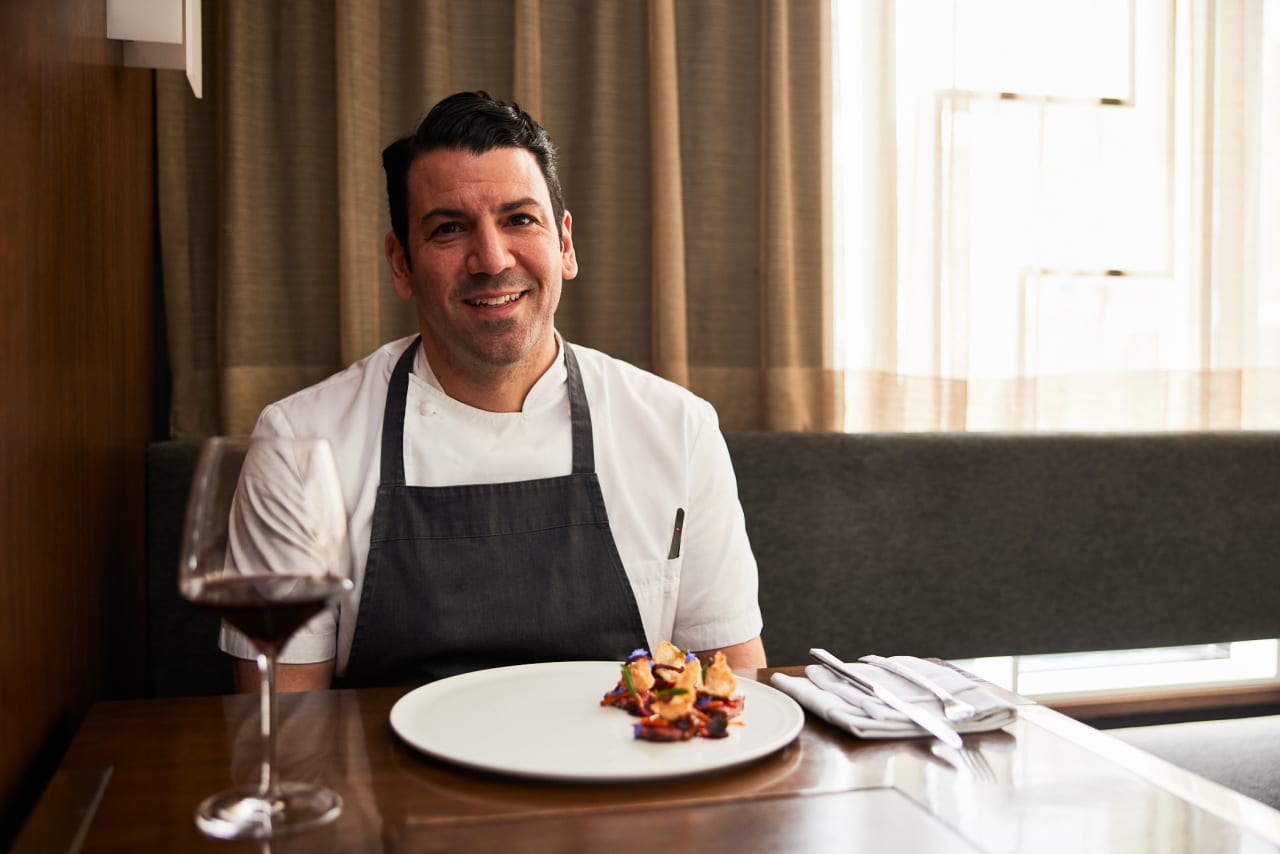
Troy Jorge is the executive chef of Temporis, a fine dining restaurant in Chicago’s West Town. Just 20 guests a night are treated to a 10-course tasting menu that features ingredients grown hydroponically in the restaurant. Mizuna, red-veined sorrel, even white strawberries are snipped from the centre of the dining table and added to dishes.
Troy trained in his native Massachusetts and moved to Chicago in 2015, where he worked at three-Michelin star Grace under his mentor Curtis Duffy, shifting after two years to two-star Acadia. Temporis has been awarded one Michelin star each year since 2018.
Temporis means ‘time’ in Latin and there is constant play with past, present and future in the restaurant: bread is baked from a three-year-old starter, fermentation halts time while also transforming ingredients, memories are plundered to create dishes for today, and produce grown on site is explicitly in the moment.
We catch up with Troy Jorge to talk dish development, kitchen culture and Australian Wagyu.
"Our Wagyu dish is usually the last savoury before we go onto sweet. It’s the most luxurious ingredient and the star of the show."
The food at Temporis is so pretty. How do you approach plating?
I like to make things look as organic as possible on the plate, not intentionally placed. I usually tell people when we’re putting herbs or flowers on a plate that they need to look like they fell from the sky. It’s about that natural look. I hate it when everything looks specifically placed at 2 o’clock and 3 o'clock. I don't like it to look forced.
You have a small restaurant and a tight team. What’s your approach as a leader?
There are just five including me in the kitchen. Once we get a person they tend to stick around for a while. We respect each other. No-one is screaming or demeaning or insulting. We police ourselves, we call each other out if we need to. We joke around when we can and we don’t joke around when we aren't supposed to.
What’s your approach to using Wagyu?
We’ve been using Westholme for two years. We’ve done tastings with Japanese and Australian Wagyu and nine times out of ten people pick the Australian for flavour. The quality and consistency is definitely there with Westholme too, which is rare to find. We tend to use a braising cut in fall and winter and in spring and summer we like the ribeye.

Where does it sit on the menu?
Our Wagyu dish is usually the last savoury before we go onto sweet. It’s the most luxurious ingredient and the star of the show.
Do you tend to use a cut in more than one way?
We do. You are paying a premium for this product so you can’t throw anything away. We get creative. We take ribeye trim to make a dumpling. We render and flavour the fat and cook the Wagyu in that. We use rendered fat to make a hollandaise, instead of clarified butter. We’ve made a mousse and used it to stuff a pomme souffle.
Do you have any tips for using Westholme?
Cook it properly. Put some premium salt on it. You don’t have to do much. It’s like a perfectly ripe heirloom tomato: you cut it and put some salt on it. Let it do its thing.


Tell us about some dishes you’ve done with Westholme Wagyu?
We do a crispy Wagyu dumpling with a soy ginger glaze using the trim from the ribeye. We grind it up, add caramelised onions, roasted garlic, thyme, parsley and salt and that gets stuffed into a fried dumpling wrapper that’s tossed in a glaze.
The ribeye itself is seared and sliced then layered with sea buckthorn gel, hibiscus puree, a kombu-and-onion marmalade and some braised morels.
In winter, we might take the cheek, brine it in apple cider then braise it till it’s soft. For service, we heat it up in an apple cider glaze until it’s sticky and gooey then plate it with date chutney, yuzu marmalade and apple butter. It’s topped with crisp beef tendon that’s seasoned with apple cider vinegar powder, and served with celery root (celeriac) puree.
How do you come up with such creative dishes?
All the dishes work towards balance. With Wagyu, you need an acidic or sour component to balance the unctuousness. We usually also put a sweet component and then throw in a couple of other elements that make it sing a little. There’s often a crispy component: that’s the beef tendon or the wonton wrapper, for example, or with the beef cheek we might add raw julienned apple to it so you have that fresh crispness, plus the sweet and sour notes at the same time.
